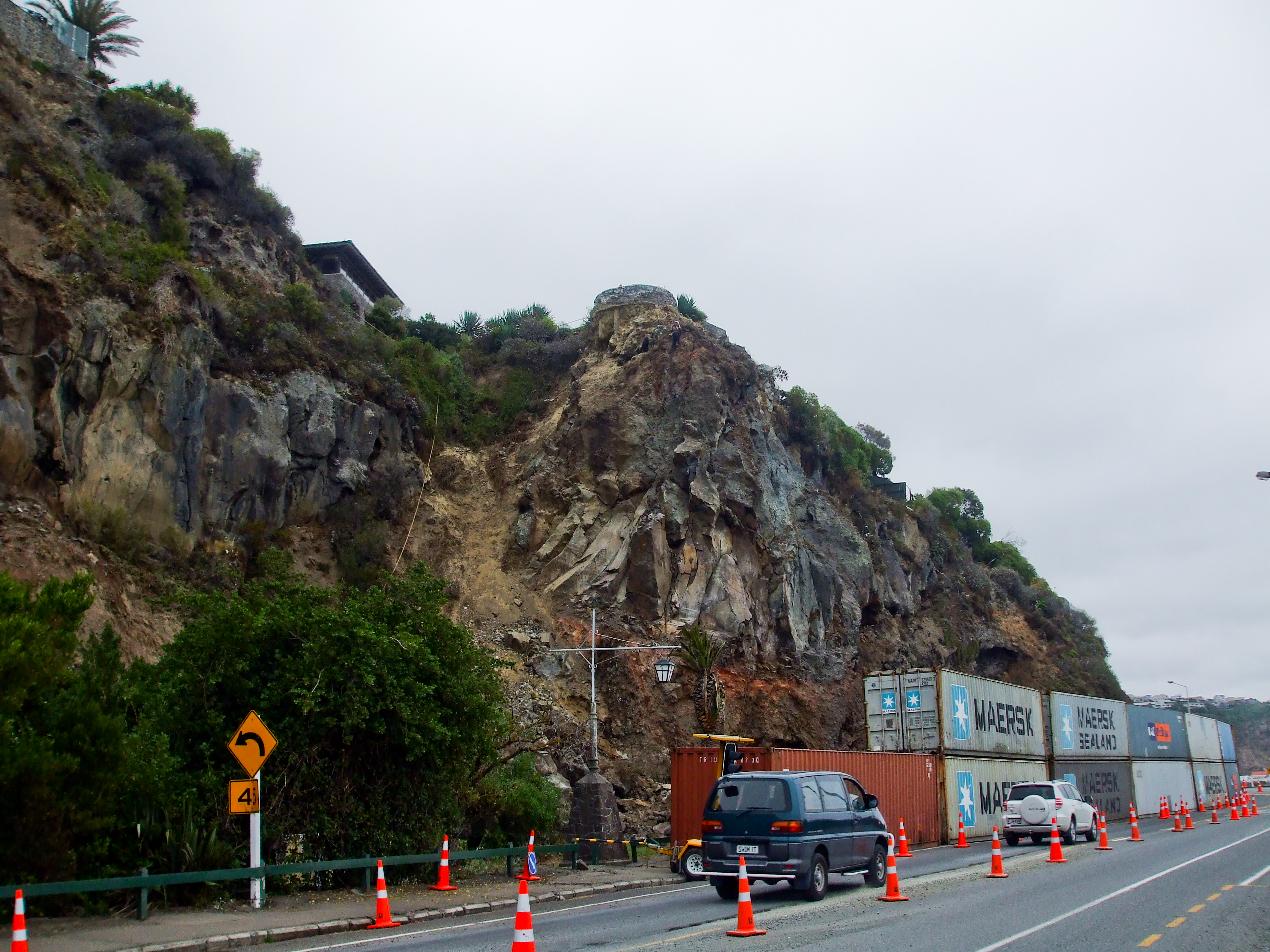Otanerito Cottage is very picturesque, situated in the middle of an impressive flower garden full of hydrangeas, dahlias, anemone and even roses.
 |
| The entrance to Otanerito Cottage (with toi toi grasses) |
 |
| A truly splendid cabbage tree shades the house |
There is a beach which is warm enough for swimming, and many of our fellow hikers had come prepared with swimming togs. We were togless, but happy to sit on the veranda, read our books, have cups of tea, and chat to whoever happened along.
 |
| Three oystercatchers on the beach |
In the next-door paddock, we could see sheep being mustered by a rather impatient farmer. There were dogs barking, dogs herding, sheep bleating anxiously, and above all the booming voice of the guy in charge: GET OVER HERE! GET OVER HERE! We stood at the fence to see what was happening, but didn't dare risk coming any closer. Whatever would he yell at nosey trampers? There was great speculation, however, about what was going to happen to those poor sheep!
After dinner we discovered that our cottage was managed by Fiona Farrell, a New Zealand author who lives nearby. She was not on the premises, but there was a fine selection of her books for our use.
Next day we headed from Otanerito past the sheep paddock and briefly watched as, one by one, the shorn lambs were released into the nearby field. So that was it. Good. These sheep were not going to be chops and roasts any time soon.
 |
| We are sure the water is pure, but what about the mug? |
We took the track up to the Hinewae Reserve, a privately managed nature reserve for the conservation of native plants and animals. The 10 km track passes by waterfalls, goes through a beech forest, and eventually reaches a summit (Purple Peak) at 600 metres. We did this stretch of the walk in the rain, so the waterfalls and little streams were pretty, but the view at the top was non-existen
Then, it was downhill through bush, and eventually along a road that lead into Akaroa where we would catch the bus to Christchurch.
Our fabulous walk was complete.
 |
| Imagine this view on a sunny day. |


















































